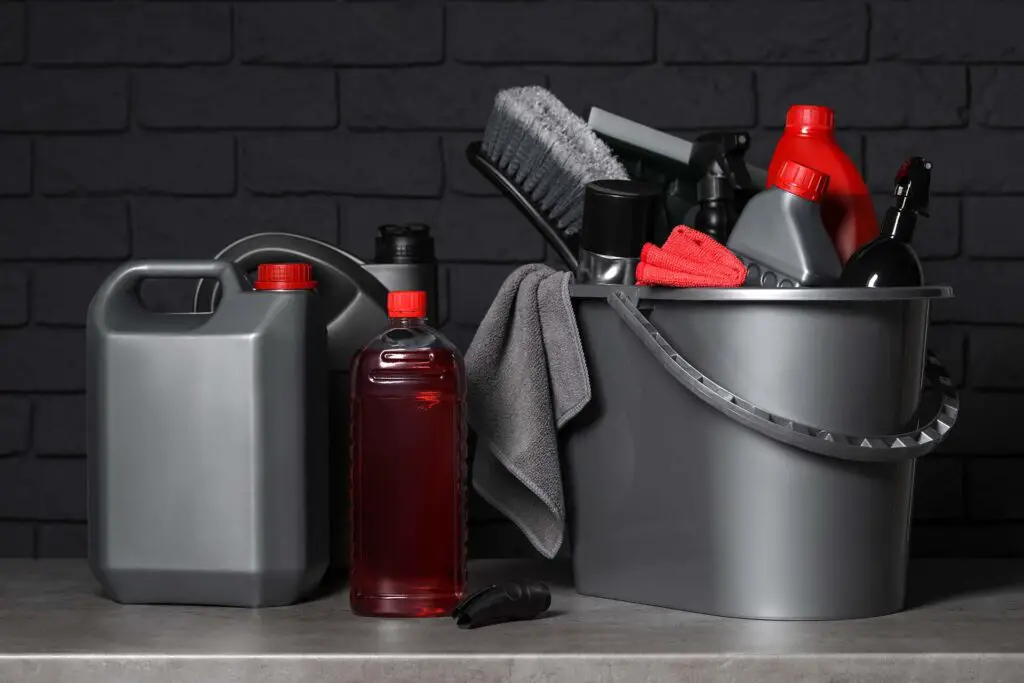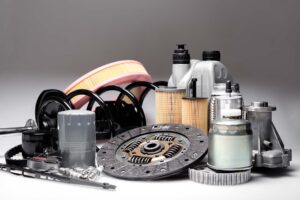Ever wrestled with a window that just refuses to glide smoothly? It’s like the universe conspiring to keep you from that fresh breeze! The solution? Time to lubricate window tracks. With a few simple steps, you can transform that stubborn slike into a silky-smooth operation.
To do this, start by thoroughly cleaning the area of any debris using a brush, vacuum, and cloth. Once dry, apply a specific lubricant evenly across, then open and close the window to help distribute the product. Regular maintenance, including monthly inspections and periodic re-lubrication, keeps the windows operating optimally.
Why Is It Important to Lubricate Window Tracks?
To lubricate car window tracks might seem like a hassle that doesn’t yield much results, but that’s far from the truth. This task isn’t just about convenience – it’s about longevity. Once each and every track is well-lubricated, the friction is reduced, which not only makes windows and sunroofs easier to open and close but also prevents wear and tear on the mechanisms.
Constant grinding without lubrication can damage both the windows and their frame over time, leading to costly repairs. So, don’t let it be one of those things you always put aside because you don’t think it’s too important. After all, honestly, who needs a daily workout just to let some air in?

Tools and Materials You Will Need
Before diving into the nitty-gritty details, let’s get your toolkit in order. It’ll ensure that the process is efficient, effective, and most importantly, easy on your windows. Here’s a quick list to get you started:
- Small brush – ideal for loosening dirt, debris, and old lubricant,
- Cloth – useful for wiping away loose dirt and applying some types of lubricants,
- Vacuum – great for quickly and efficiently removing the debris you’ve loosened.
How to Know Which Lubricant Is Ideal for Your Windows
Not all lubricants are created equal, and knowing which one to choose can make a significant difference in performance. Factors to consider include the material, the climate in your region, and whether or not the windows are tinted. Let’s take a closer look at some popular choices:
| Type | Intended Use | Pros | Cons |
| Silicone Spray | Vinyl or metal windows | Long-lasting and doesn’t attract dirt | Can be slightly more expensive |
| Graphite Powder | Aluminum windows | Non-sticky and resists dirt buildup | Can be messy during the application |
| White Lithium Grease | Heavy sliding windows | Durable and excellent for high-friction areas | Can attract dust if over-applied |
| Teflon Spray | For most types | Long-lasting and versatile | Needs reapplication more frequently |
Choosing the right lubricant is essential, as some can attract dirt or even degrade the material of your track if mismatched. It’s best to consult your owner’s manual to determine the type of windows you have, and some of them even have recommendations for specific products to use.

Preparing Your Workspace Before You Begin
Before rolling up those sleeves and diving into the process, it’s crucial to set the stage for a safe and efficient workspace. Some lubricants might release fumes, and they can be harmful or irritating if inhaled in large amounts. So, working in a well-ventilated area is essential.
Also, make sure you have a pair of gloves on. Not only do they protect your hands from potential irritants found in cleaning agents or lubricants, but they also prevent any oils or dirt from getting onto the frame.

How to Lubricate Window Tracks – Step-By-Step Process
No matter if you’re cruising in a used vehicle or you’ve just pulled out of the dealership with the latest luxury model, maintaining those frames should never be overlooked. So, ready to get those sliders moving like a dream? The steps might be simple, but they can make a world of difference when done properly.
Cleaning the Tracks Thoroughly
First off, pop that window open. A quick inspection might reveal a fair bit of dirt, grime, or even some telltale signs of wear. Here’s how to give it a good cleanup:
- Use a small brush to gently break up accumulated muck,
- Fire up your vacuum and focus on the area to pull out the debris you’ve loosened,
- Dampen the cloth and sweep over the surface, removing any lingering residue,
- Before moving on, let the area air-dry completely.
Apply a Thick Layer of Lubricant
Now, for the slick part. Always start by glancing over your chosen product’s instructions – this will make sure you get the most out of the lubricant. Dot a bit along the frame and use the sliding motion of the window to spread it out evenly. A few back-and-forths will do the trick.
Finally, give the frame and glass a final swipe to keep everything looking neat and clear. And there you have it – you’ve got squeaky clean windows without any squeaking involved!

Tips for Maintaining Lubricated Window Tracks
Keeping those sliders in tip-top shape goes beyond just an initial round of cleaning and lubricating. Like any component of your four-wheeler, from the spark plugs to the tail light, regular check-ins and maintenance are essential. Here are some aspects you need to take into account:
Monthly Inspection Recommendations
Set a date in your calendar – whether it’s the first Saturday of every month or any other time that suits you. On this day, make it a ritual to inspect your sliders. Look out for accumulated dirt, signs of wear, or any unusual noises when opening or closing. It’s a small commitment that can preempt bigger problems down the road.
Cleaning Tips to Ensure Smooth Operation
Consistency is king. A quick swipe with a cloth after a sandy trip or on particularly dusty days can work wonders. Also, always ensure that the cleaning agents you use aren’t harsh or abrasive. A gentle cleaning solution every once in a while, followed by a wipe-down, will keep your frames operating smoothly.
Signs That Your Window Tracks Need Re-Lubrication
You’ll know it’s time for another round of lubrication when the window doesn’t glide as effortlessly as it once did. Listen to your vehicle – a squeaking sound or slight resistance are both signals.
Also, if you notice that the track appears dry or you can spot patches of rust, it’s a clear indication that your windows could use another round of lubrication love. Don’t wait for it to become a bigger issue – address it head-on!
Here’s How to Troubleshoot Some Common Issues With Window Tracks
When you’ve put in the effort to clean and lubricate, it can be frustrating if the window still refuses to glide like a dream. First things first, don’t panic. Sometimes, even after a thorough clean, there might be hidden dirt or grime caught deeper in the frame, obstructing the movement.
Another possible culprit could be old or degraded rubber seals. Replacing these can be an immediate solution to your window’s stubborn behavior, and the process is not complicated at all. As for damaged or warped tracks, these can be trickier. While minor bends can be adjusted with careful pressure, major damages might call for a replacement. If things seem too complicated, consulting a professional can provide the best course of action.
Over-Lubrication Can Pose a Problem as Well
On the other end of the spectrum, if you’ve been a tad generous with the lubricant, you might face over-lubrication. This can attract more dirt and debris, leading to a gunky mess. In such cases, a good cleaning regimen, similar to what you’d have followed previously, should help in getting the whole frame nice and smooth again.

Wrapping Up the Window Woes
Keeping those tracks slick and smooth isn’t rocket science, but it sure does require a bit of attention and love. Just like any part of your ride, a little maintenance goes a long way. Remember, whether you’re just cruising around town or gearing up for a road trip, a smooth-sliding window can make the journey that much better. So, roll ’em up, roll ’em down, and enjoy the breeze!
Frequently Asked Questions About Window Lubrication
How Often Should I Lubricate My Window Tracks?
Typically, every 6 months to a year is ideal. However, if you notice resistance or hear squeaking earlier, it’s a sign to re-lubricate sooner. Consistency in maintenance keeps your windows in top form.
Can I Use Any Household Lubricant on My Tracks?
It’s best to use lubricants specifically designed for tracks. Household oils might attract more dust and can degrade rubber seals. Using the right lubricant ensures longevity and smooth operation for your windows.
My Window Still Won’t Slide Smoothly After Lubrication – What’s Wrong?
It could be due to deeper grime, a damaged track, or degraded rubber seals. Inspect carefully, clean again, or consider consulting a professional. Identifying and addressing the root cause ensures your windows operate effortlessly.
How Can I Tell if I’ve Over-Lubricated the Tracks?
Over-lubrication often results in a greasy or oily buildup which attracts more dirt. If the tracks seem excessively wet or gunky, it’s likely too much. Proper application of lubricant maintains these components without creating a mess.
Are There Any Natural or DIY Solutions for Cleaning the Frame?
Yes! A mixture of white vinegar and water can be an effective cleaning solution. However, ensure it’s dried thoroughly before applying any lubricant. Using a natural solution can keep your maintenance routine eco-friendly and efficient.
Can I Use Wd-40 to Lubricate the Tracks?
While WD-40 can be used as a temporary solution to help a sticky window glide more smoothly, it’s not a long-term lubricant for tracks. Over time, it may attract more dirt and dust. It’s always best to use a lubricant specifically designed for this purpose for better, lasting results.
What if the Rubber Seals Are Damaged?
If the rubber seals are damaged, lubrication alone might not solve the problem. Damaged seals can cause leaks, noise, and even affect the window’s operation. It’s advisable to replace damaged seals to ensure the window functions correctly and efficiently.
Can a Dirty or Clogged Track Affect My Car’s Energy Efficiency?
Yes, dirty or clogged tracks can prevent the window from sealing correctly. This may allow air to enter or escape, potentially affecting the vehicle’s insulation and, in turn, its energy efficiency, especially when using heating or cooling systems. Regular cleaning and maintenance can help mitigate such issues.








